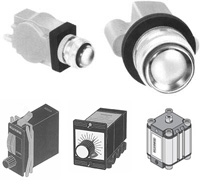What is Pneumatic Valve Activation, & How Does it Work?
 Pneumatic valves, which are often referred to as directional control valves, become activated in various ways depending on the needs of the user and system. The most common activations include:
Pneumatic valves, which are often referred to as directional control valves, become activated in various ways depending on the needs of the user and system. The most common activations include:
- Air-piloted
- Manual
- Solenoid-operated
There are simplistic versions of these devices, such as 2-way and 3-way valves. Simplistic pneumatic control valves often allow users to turn on and off airflow. More complex valves also exist as a means of providing specialized performance. For instance, a 4-way valve switches supplies and exhausts between two separate outlet ports.
A manually activated valve is switched closed and open by foot pedals, or toggle's that a user must trigger. Some valves also utilize handles, pushbuttons, or knobs. The manual pneumatic control valve operator directly controls activated positions of the spring and valves. The operator is also responsible for returning the valve, when finished, to its home position.
A solenoid-operated valve utilizes electrical coils to control the poppet position. This is also the case for spools and plungers in and out of open and close positions within the pneumatic control valve. It is used to control voltages between 12 and 240 VAC.
An air-piloted valve needs an external air source (a solenoid-operated valve) set up remotely. These valves are also internally air-piloted, which enables the use of small, electric solenoids. This method allows the operator to have a consistent and reliable air pilot signal to control large valve spools.
Related Reading about Pneumatic Valves


- Ellis/Kuhnke Controls
132 Lewis Street Unit A-2, Eatontown, N.J. 07724
Phone: 1-800-221-0714
Fax: 732-291-8154
Email: Info@ekci.com
- Home Pneumatic Controls Technical Info CAD Drawings Contact Us Pneumatic Timers Blog Site Map
